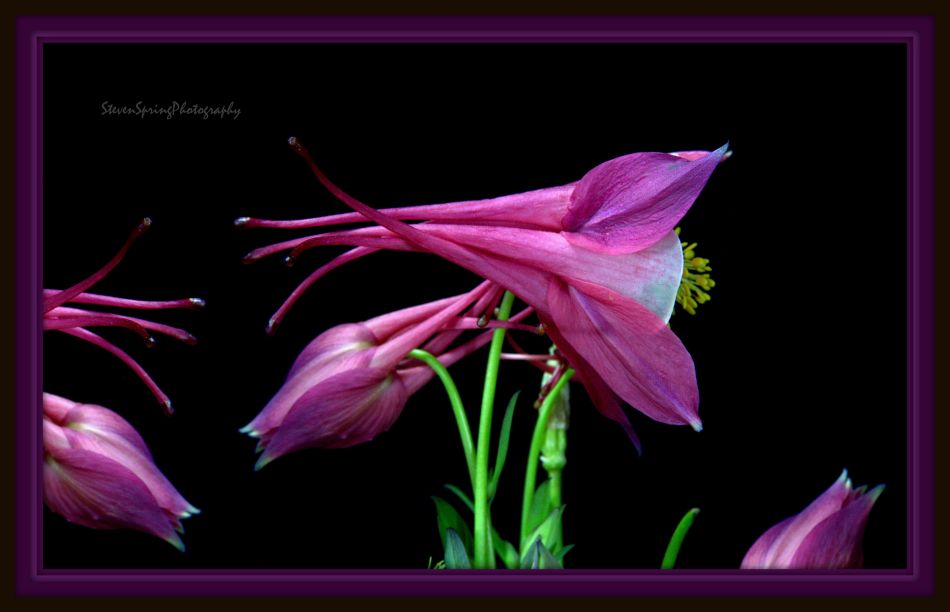Columbine #271BR
Columbine, whose scientific name is Aquilegia, which is derived from the Latin word aquila which translates as eagle, is so named because the spurred shape of the plant’s sepals on many of the sixty to seventy species of the flower resemble an eagle’s talons. This easy to grow, hardy perennial blooms from late spring through early summer. Though not particularly a long-lived plant, most die off after only two or three years. However, the plant does grow easily from seed, and if seed pods are allowed to develop annually will reseed themselves. The long spurs of the flower produces a nectar that is a favored by hummingbirds, butterflies and bees.
Native to Asia, the plant is now found growing in the wild in meadows, woodlands and at higher altitudes throughout North America and Europe. Columbine, which come in many colors ranging from red, pink and white to purple and blue, are propagated by seed, growing to a height of fifteen to twenty inches. The plant will grow in full sun, however it prefers partial shade and a moist, rich, well-drained soil. Having a long taproot, which allows it to survive periods of drought, this same taproot does make transplanting the plant somewhat difficult.
Columbine, the state flower of Colorado (Rocky Mountain Columbine), were consumed in moderation by Native Americans as a condiment and are said to be very sweet. However, the seeds and root of the plant are very poisonous and if consumed can be fatal.
If I am fortunate to have you view my photographs and you find the color saturation too much or the color schemes of the mats do not match either themselves or the photograph, please let me know via a comment. Being color-blind, what might look great to me might look like sh*t to everyone else!
Steven H. Spring
Earth
